I was going through my Big Box of Photos (we all have one, right?) when I came across a black bulk-roll canister. It was marked with a yellowed piece of masking tape, and while most of the scribbling on it was faded or unintelligible, I could make out “400 @ 1600” and “+2” in my own handwriting. I racked my brain: This must have been something I shot as a college student when I was living in London and interning for a magazine. I have a vague memory of pushing a roll of Ilford HP5 to 1600 ASA and not knowing where or how to get it developed. If I was right, this film had been sitting in its canister, undeveloped, for the last twenty-six years, give or take a few months.
A little Internetting told me I should expect some age fog. This film had lived in various attics and closets in London, New York, Rochester and Los Angeles, and no doubt had been on a roller-coaster ride of temperature and humidity over the last two-and-a-half decades. Whatever I did, the results probably weren’t going to be pretty. Based on my research, I decided my best bet was to develop in Kodak HC-110 (as opposed to D-76, my preferred HP5+ developer), dilution B for 11 minutes at 68 degrees F, standard routine for stop, fix and rinse. I didn’t know if Ilford had changed HP5’s formula since the 1990s, or if I needed a hardening fixer. I decided to go with what I had and hope for the best.
All of us who develop our own film know that moment when the last rinse is done and it’s safe to pop the top off the tank, pull some film off the reel and see what there is to be seen. I peeled off that little bit of film, and…
I had images! The negatives looked pretty sad, but they were negatives. My latent images had survived!
Here’s a comparison of these negatives (top two) with a freshly shot and developed strip of HP5 at 1600 (bottom):
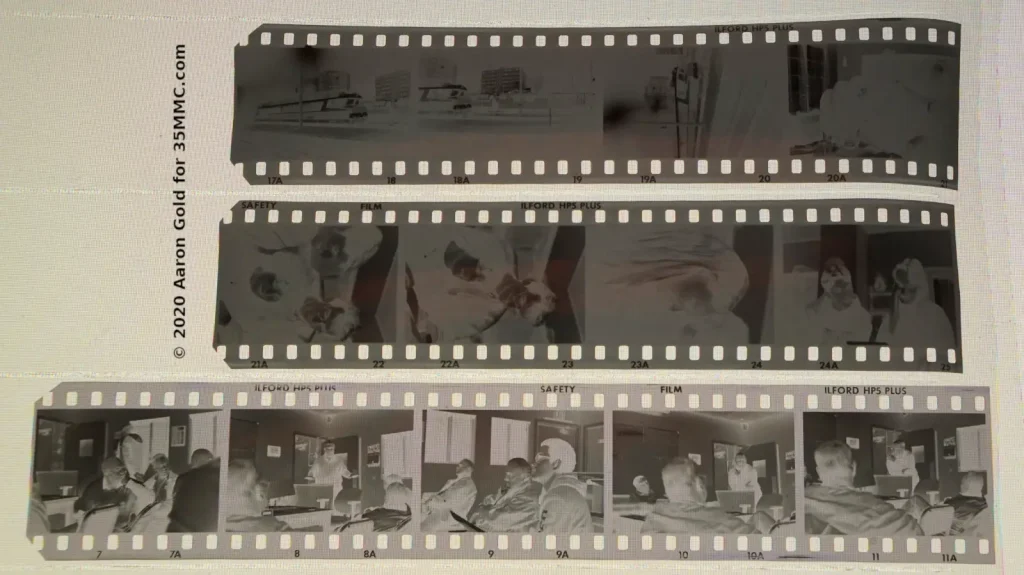
The film was in rough shape—the base was cloudy and gray, but the tone throughout was even. The images were dull but visible, and I could vaguely make out the distinct shape of a French locomotive on one. That cemented the timeline: A trip from England to France to see my friend Nathalie, sometime in late 1993 or early 1994. I’m not sure which camera I used, but it was most likely my Pentax MG.
The resulting pictures were grainy, gray and contrasty. (You’re looking at the raw scans from my Epson V550 – I’ve avoided the temptation to adjust contrast or white/black points.) The night shots were the roughest, but some of the indoor shots looked surprisingly good, all things considered.
As the scans came up on my computer screen, the memories came flooding back.
The first few pictures were from the row-house in Tooting, London, where I rented a room. Every year or so my landlady-slash-housemate, Juliet, would invite her elderly neighbor (who drove the only old-style Mini I ever saw with an automatic transmission) for drinks. The stories he repeated of his boyhood in Tooting bored her to tears, but they were all new to me and I found them fascinating.
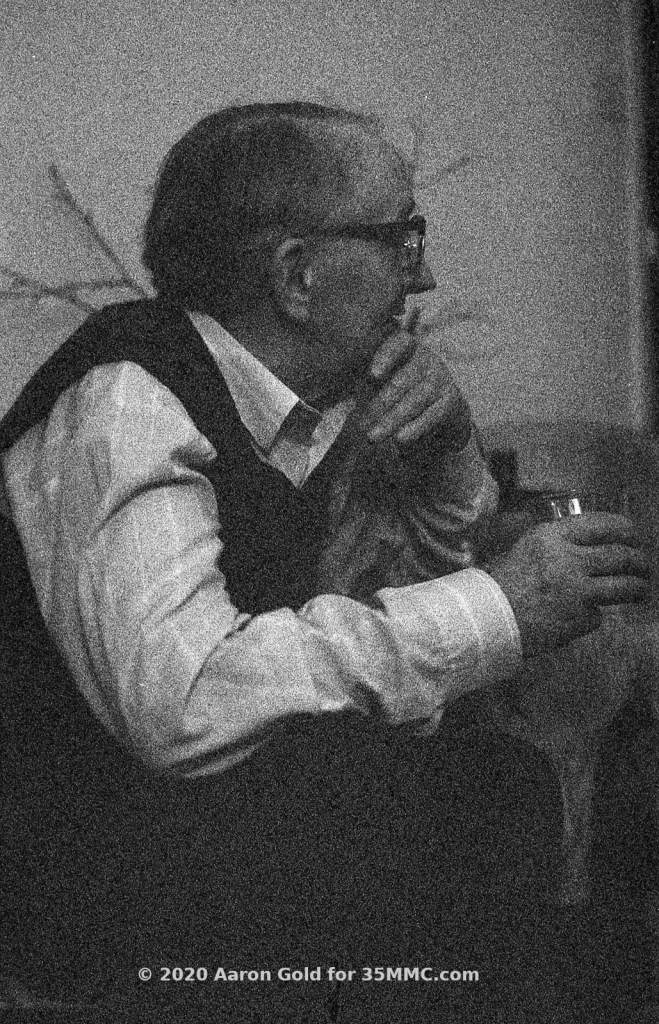
I must have been shooting with the camera in my lap, because a couple of them were pretty badly framed.
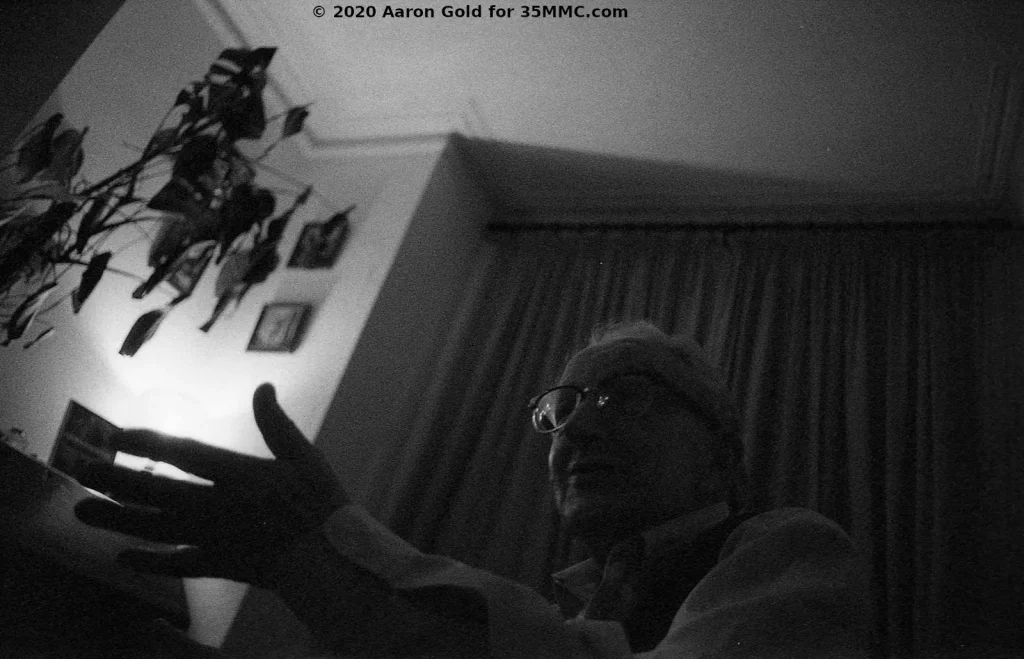
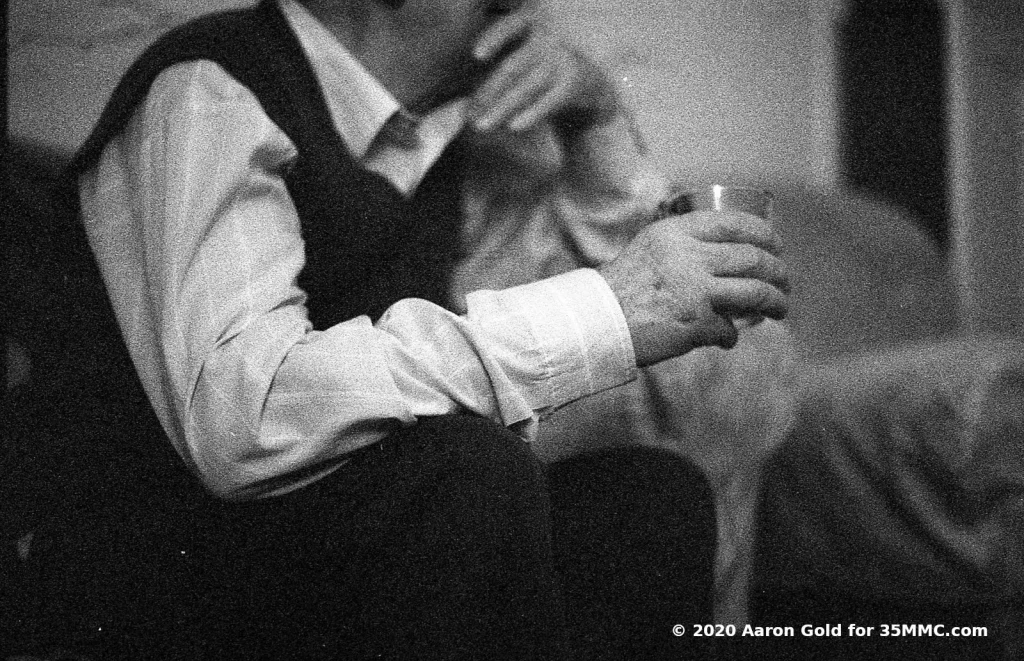
I even tried a self-portrait.
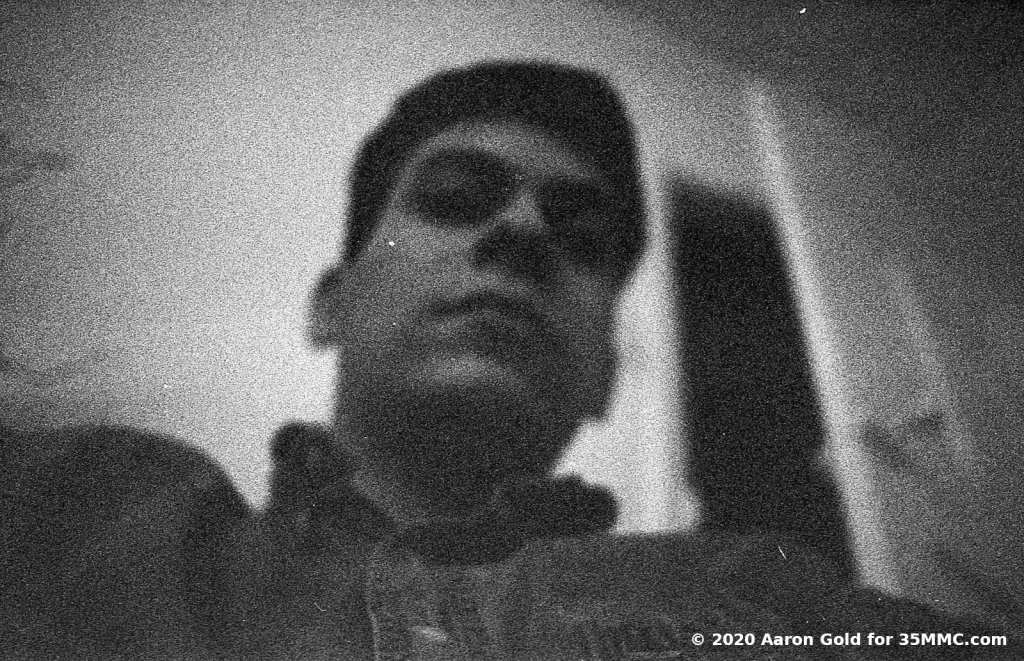
Not a good look.
There was one shot of Oliver the cat rolled up in a ball which I didn’t think much of, but it’s my wife Robin’s favorite on the roll—she thinks it looks like a painting with a warm and homey feel. “Reminds me of everything I love about having a cat,” she said. (We have dogs.)
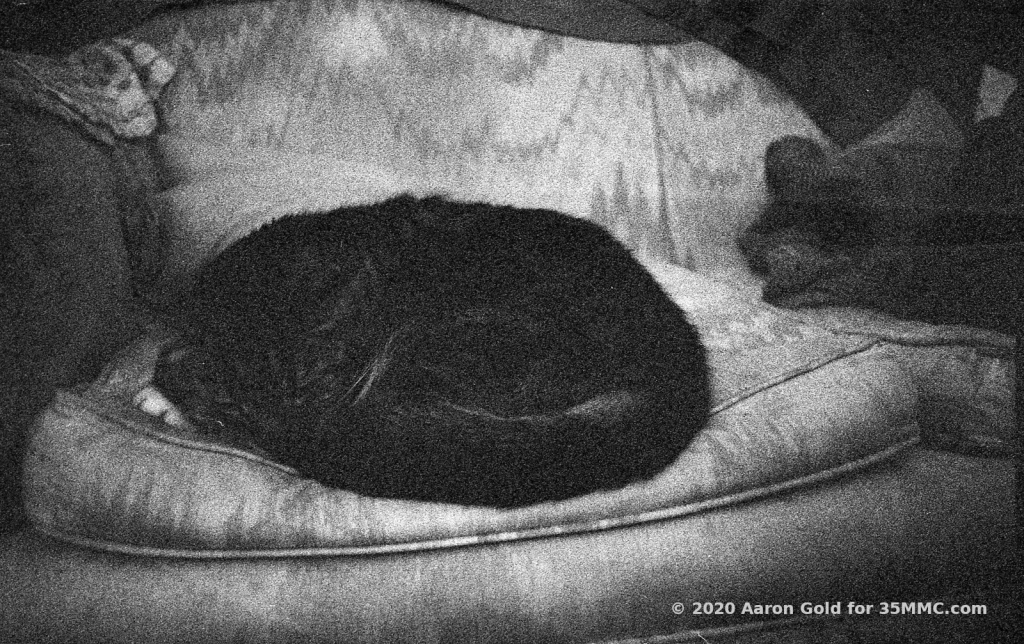
There are a few blank shots—I must have unloaded and reloaded the film—then four pictures of Ollie having taken up residence in my winter coat. Cute? Maybe to you, but I knew Ollie would scratch the shit out of me if I tried to reclaim my clothing before he was done with it.
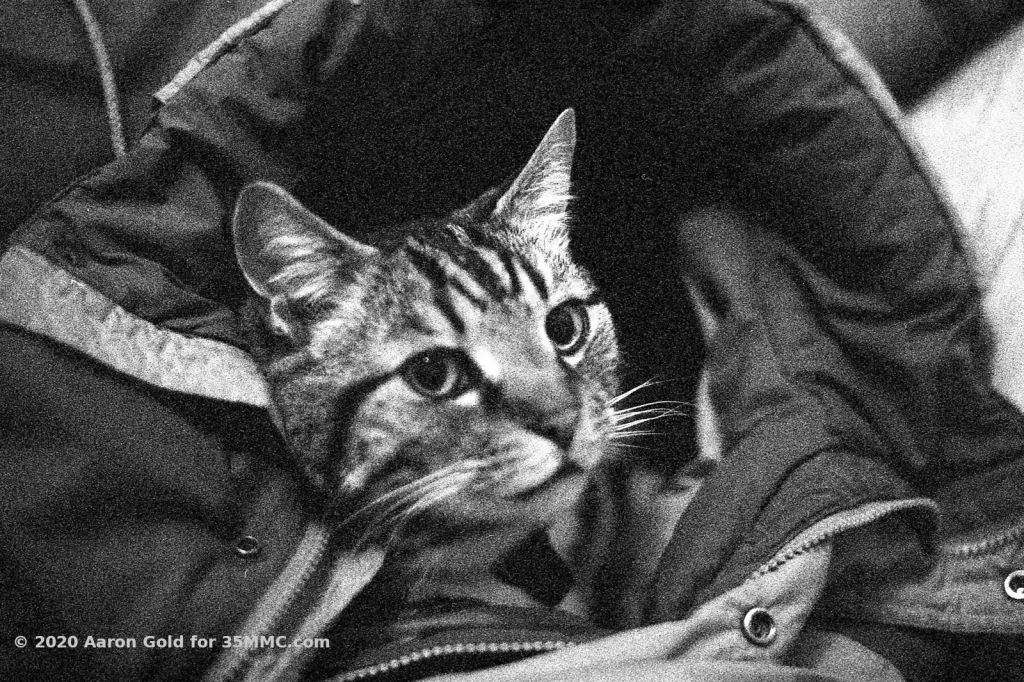
The next shots were from Paris: A candid photo in the train station, a few of Notre Dame and a couple of snapshots of an SNCF 72000-class locomotive which, until then, I had only seen in books. (I’m a bit of a train geek.)
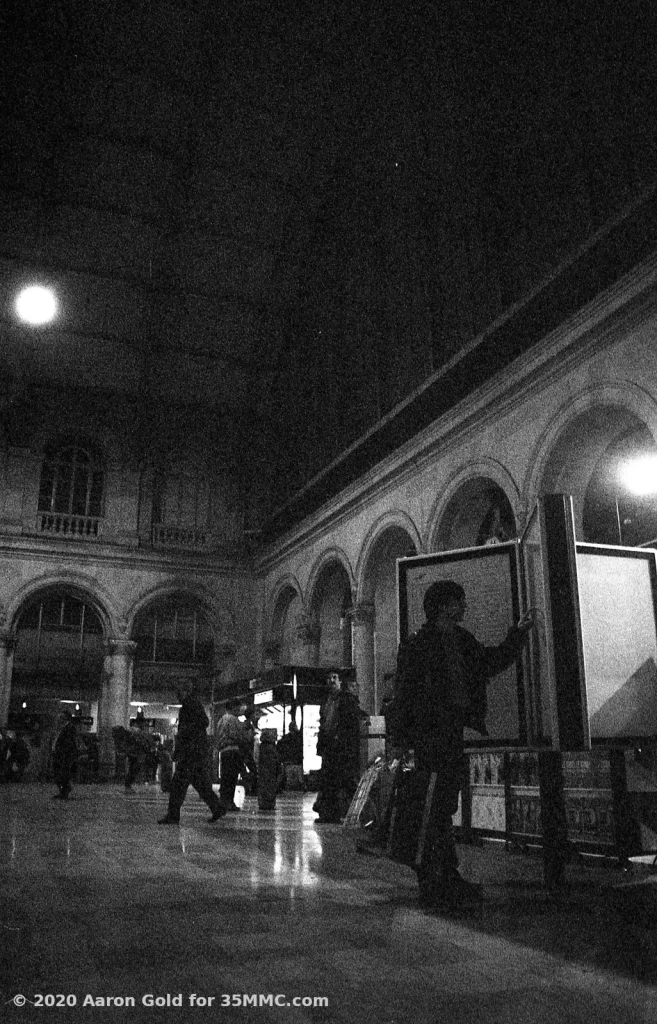
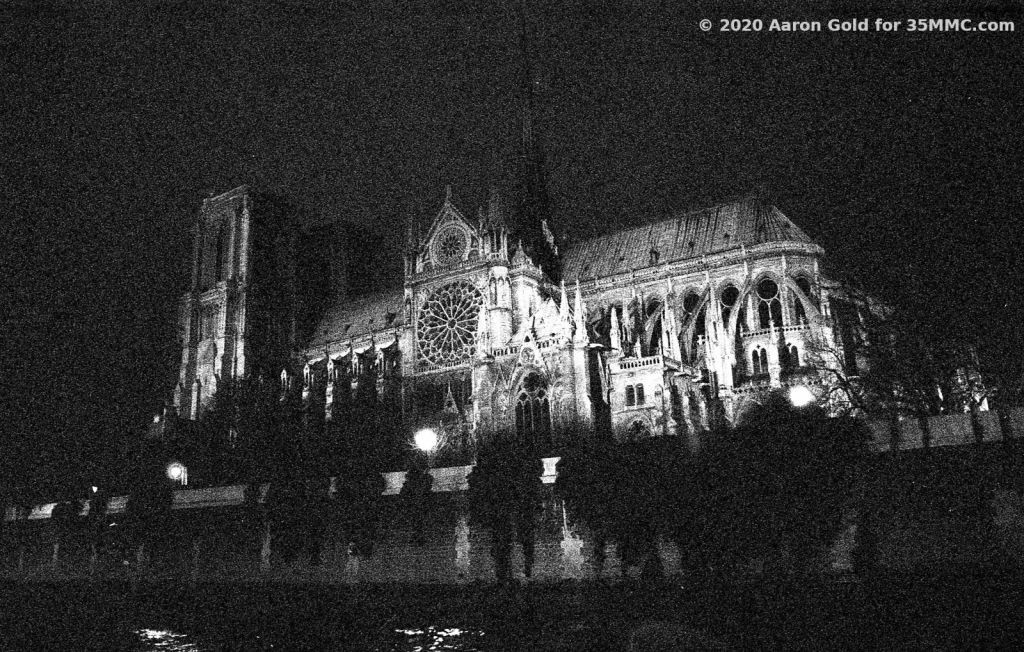
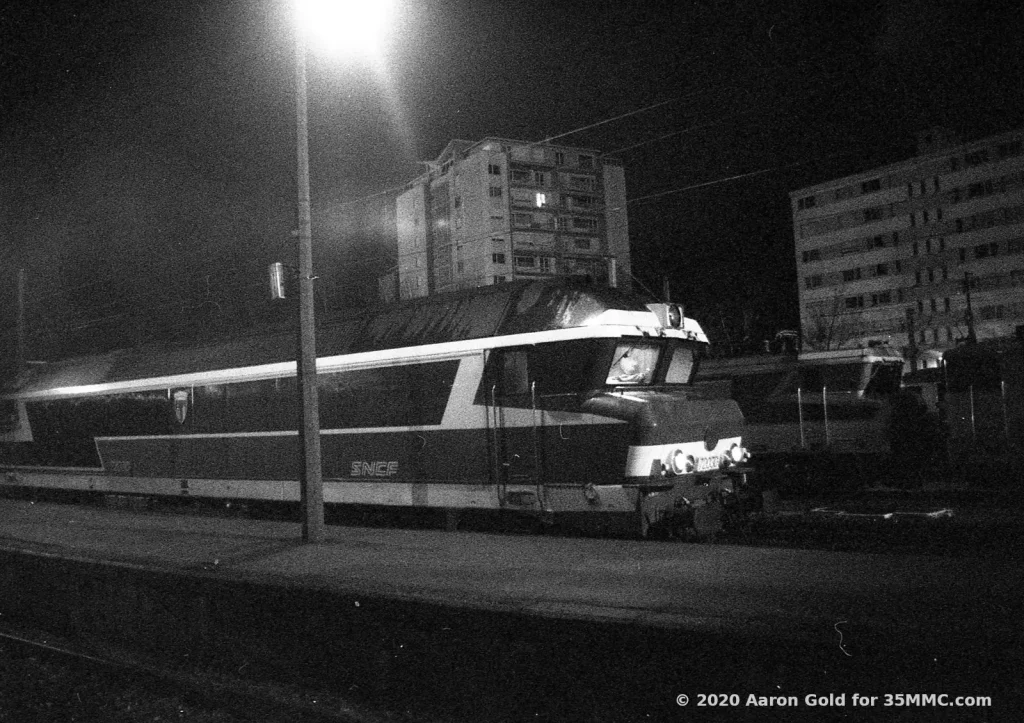
The next batch of shots are of my friend Nathalie’s family at their home in Mittelwihr, Alsace, where I spent Christmas 1993 before heading off to the Alps to ring in the New Year. One batch of shots shows Nathalie’s family looking at pictures, and in the first (very underexposed) shot I recognized a picture on the table—it’s one of the snaps I took at Christmas dinner.
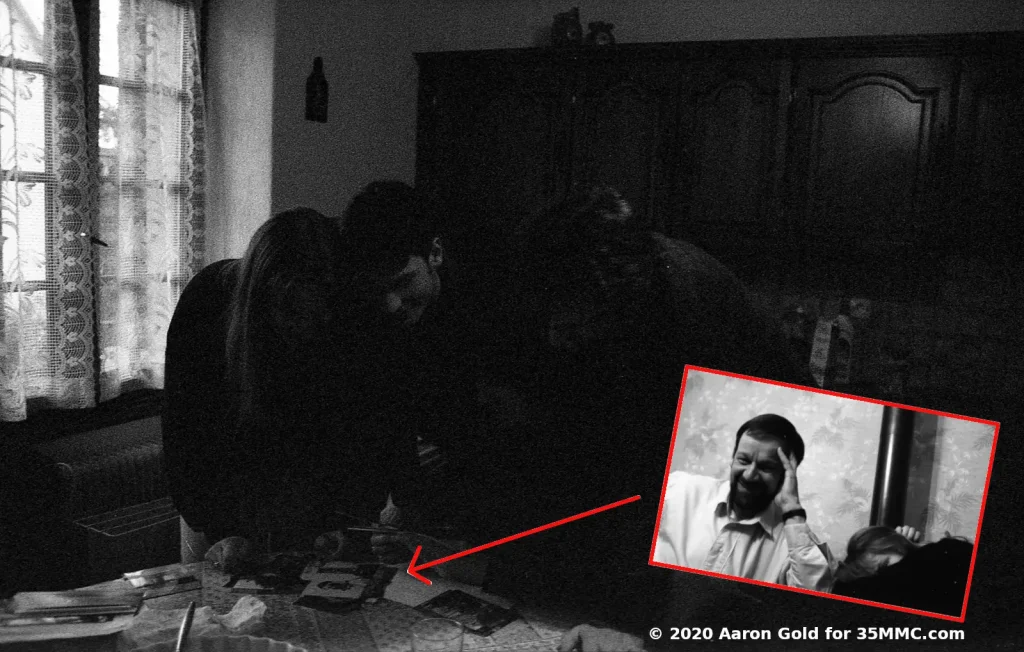
I don’t remember doing it, but Nath and I must have gotten the film processed, and I took pictures of them looking at the pictures.
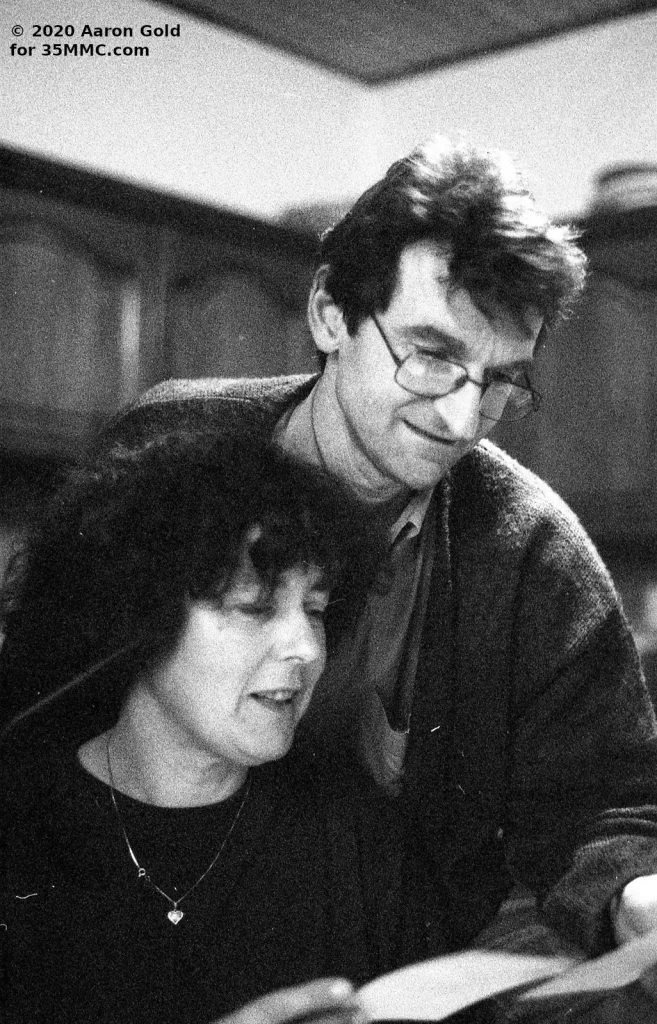
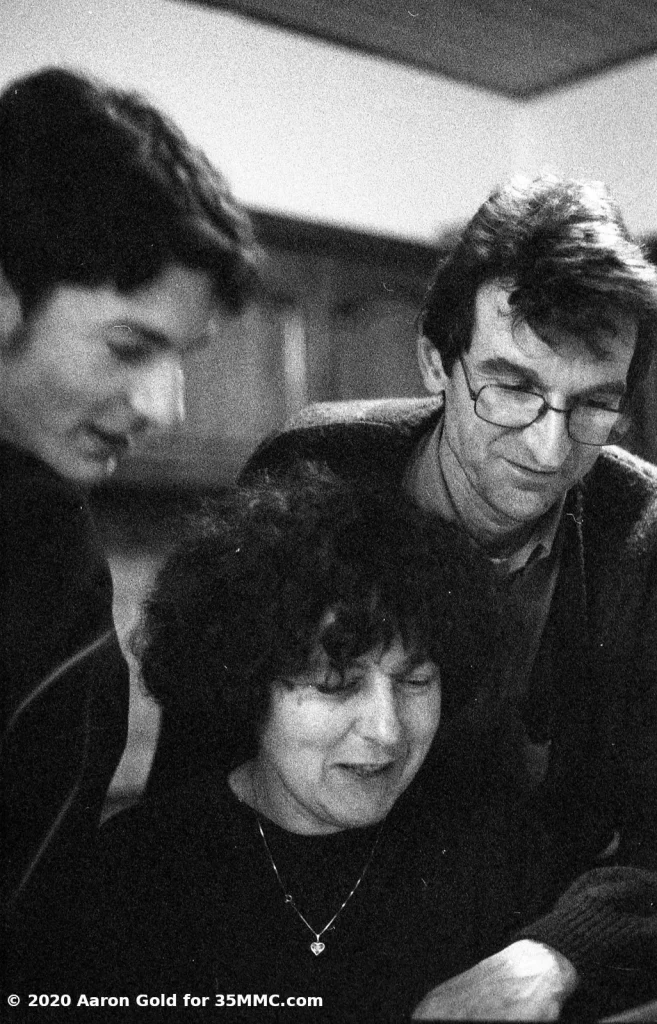
One of the photos is of Nath’s mother and her little sister, Celine, who died in 2001. I still talk with Nathalie, and she was thrilled to see the picture of Celine. She’s pretty sure that once her parents see it, their “fils Americain” will once again be their favorite child. It’s my favorite shot on this roll, and the opportunity to find it and share it with the family has been the best part of this whole experience.
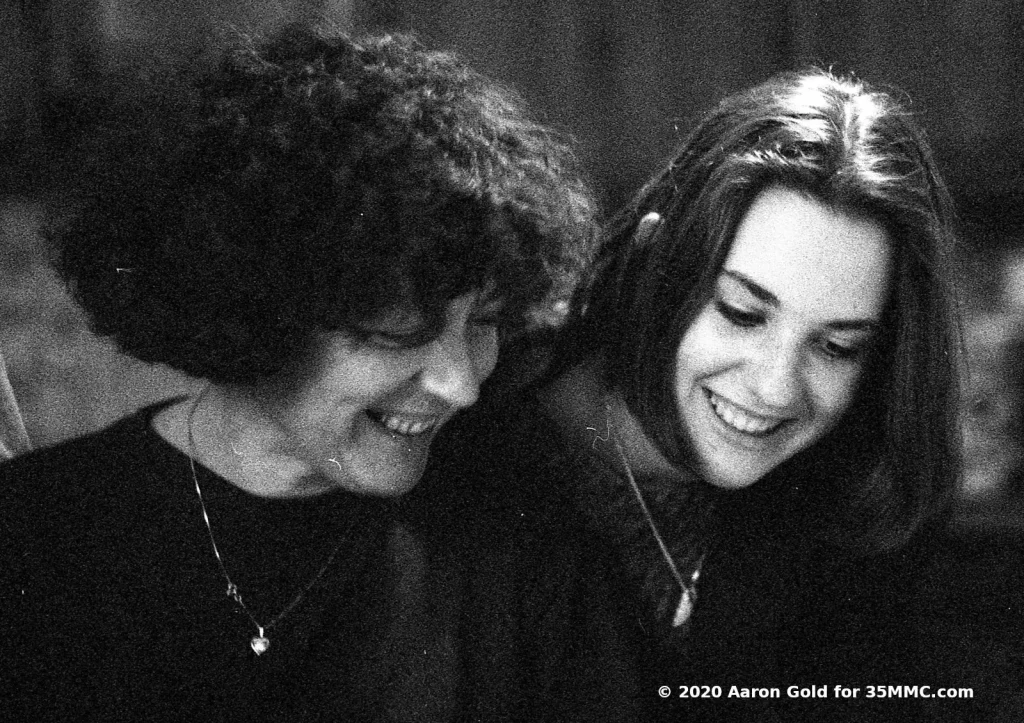
This little episode has been a microcosm of almost everything I love about film photography: Fussing over chemicals and process, enjoying the delights of delayed gratification, reliving old memories, finding a few beautiful images, and sharing something with friends that has a real emotional connection for them. I feel very fortunate to have had an experience that few photographers will ever encounter. Maybe I should shoot another roll of HP5 this week and store it away until 2046…
© 2020 Aaron Gold
Share this post:
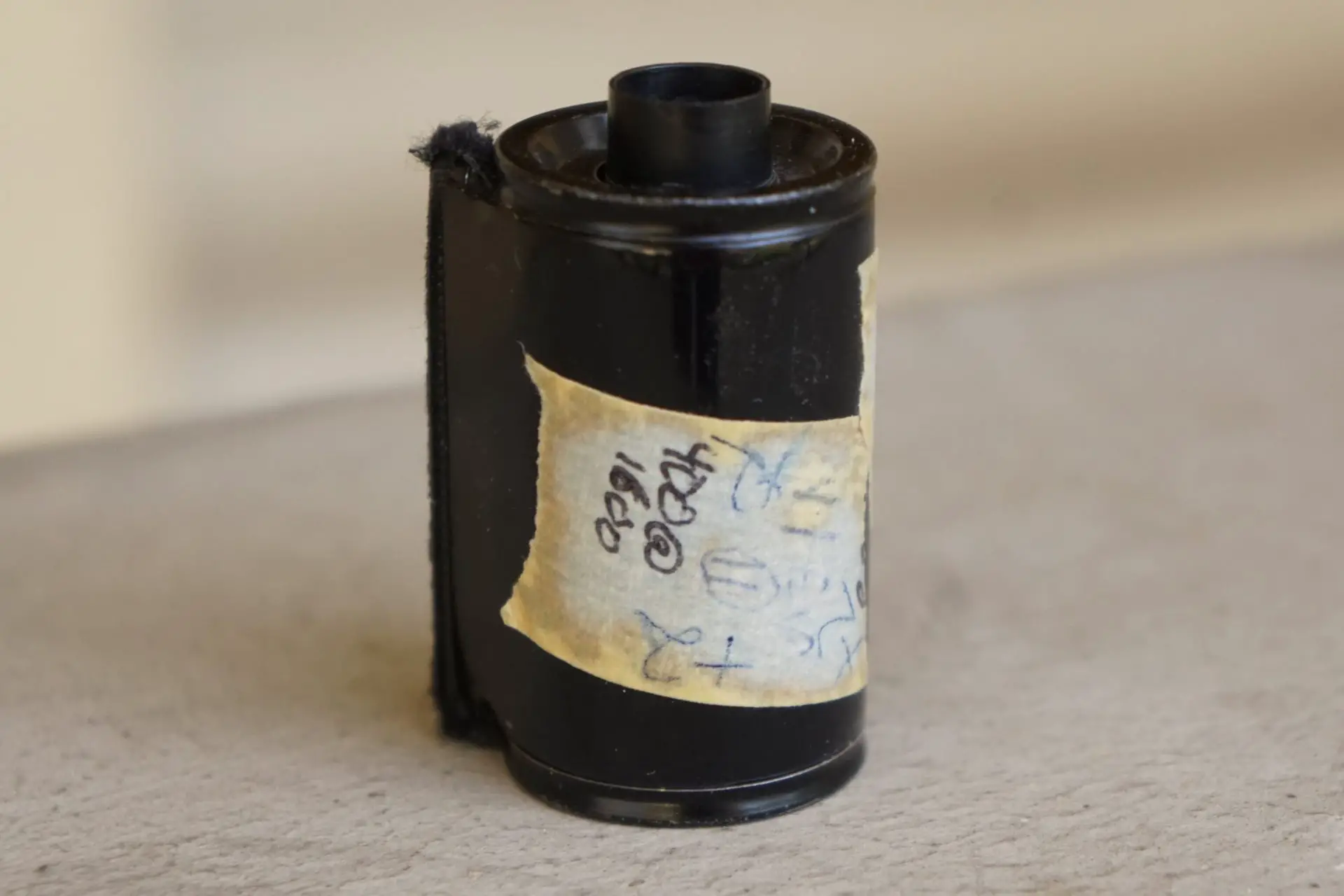








Comments
Terry B on Ilford HP5 – I Just Developed a Roll I Shot a Quarter-Century Ago – By Aaron Gold
Comment posted: 17/04/2020
Comment posted: 17/04/2020
Comment posted: 17/04/2020
Khürt Louis Williams on Ilford HP5 – I Just Developed a Roll I Shot a Quarter-Century Ago – By Aaron Gold
Comment posted: 17/04/2020
Comment posted: 17/04/2020
Jim on Ilford HP5 – I Just Developed a Roll I Shot a Quarter-Century Ago – By Aaron Gold
Comment posted: 17/04/2020
Larry Bruce on Ilford HP5 – I Just Developed a Roll I Shot a Quarter-Century Ago – By Aaron Gold
Comment posted: 17/04/2020
Ian Do Carmo on Ilford HP5 – I Just Developed a Roll I Shot a Quarter-Century Ago – By Aaron Gold
Comment posted: 17/04/2020
The family shots are my favourites as well, it does remind me what I actually enjoy about film photography, and I think I’ve realised why I haven’t picked up my camera for awhile.
When I was self learning film photography I picked up a few magazines, one of them “was about shooting in low light photography”, somewhat printed in the late 70’s when fast films were a novelty and there was more “affordable” to shoot fast colour film. While it gave a good guidance, I was stunned by the selection of photos.
Seeing your photos right now remind me a lot of that magazine, and how a photographer should handle low light situations.
Thanks for sharing.
Eric Norris on Ilford HP5 – I Just Developed a Roll I Shot a Quarter-Century Ago – By Aaron Gold
Comment posted: 17/04/2020
Maybe put some HP5 in the freezer now. Halley’s Comet is coming back in 2061.
—Eric
Ilya on Ilford HP5 – I Just Developed a Roll I Shot a Quarter-Century Ago – By Aaron Gold
Comment posted: 17/04/2020
Rock on Ilford HP5 – I Just Developed a Roll I Shot a Quarter-Century Ago – By Aaron Gold
Comment posted: 17/04/2020
Conor Clarke on Ilford HP5 – I Just Developed a Roll I Shot a Quarter-Century Ago – By Aaron Gold
Comment posted: 17/04/2020
Clive W on Ilford HP5 – I Just Developed a Roll I Shot a Quarter-Century Ago – By Aaron Gold
Comment posted: 17/04/2020
But the picture of the family trio is priceless, and so much more powerful for them being absorbed in something else rather than forcing smiles for the camera.
Now, feel free to make all these look as good as you can. This is art, not science!
Eric Rose on Ilford HP5 – I Just Developed a Roll I Shot a Quarter-Century Ago – By Aaron Gold
Comment posted: 17/04/2020
Randy on Ilford HP5 – I Just Developed a Roll I Shot a Quarter-Century Ago – By Aaron Gold
Comment posted: 17/04/2020
Kodachromeguy on Ilford HP5 – I Just Developed a Roll I Shot a Quarter-Century Ago – By Aaron Gold
Comment posted: 19/04/2020
Scott Gitlin on Ilford HP5 – I Just Developed a Roll I Shot a Quarter-Century Ago – By Aaron Gold
Comment posted: 19/04/2020
Martin White on Ilford HP5 – I Just Developed a Roll I Shot a Quarter-Century Ago – By Aaron Gold
Comment posted: 19/04/2020
Kai Penninkilampi on Ilford HP5 – I Just Developed a Roll I Shot a Quarter-Century Ago – By Aaron Gold
Comment posted: 21/04/2020